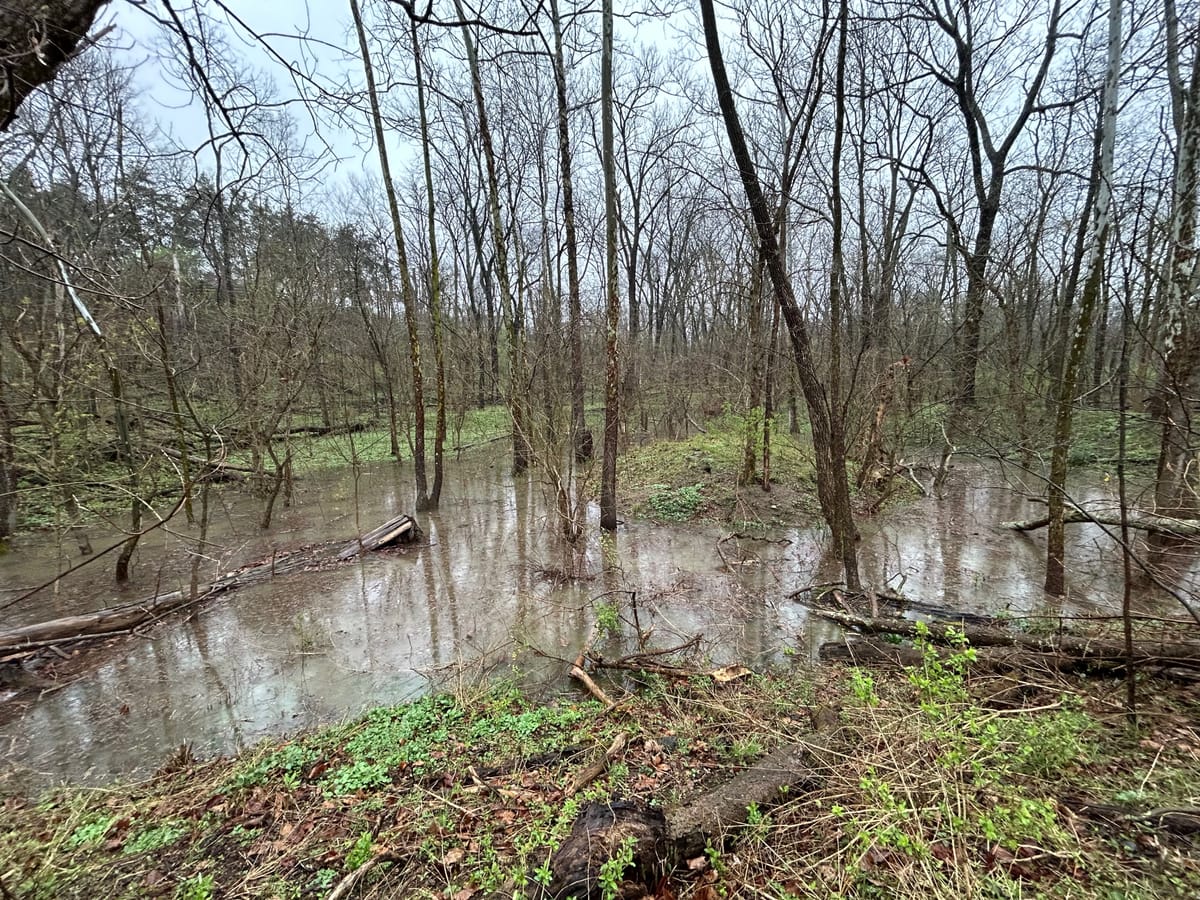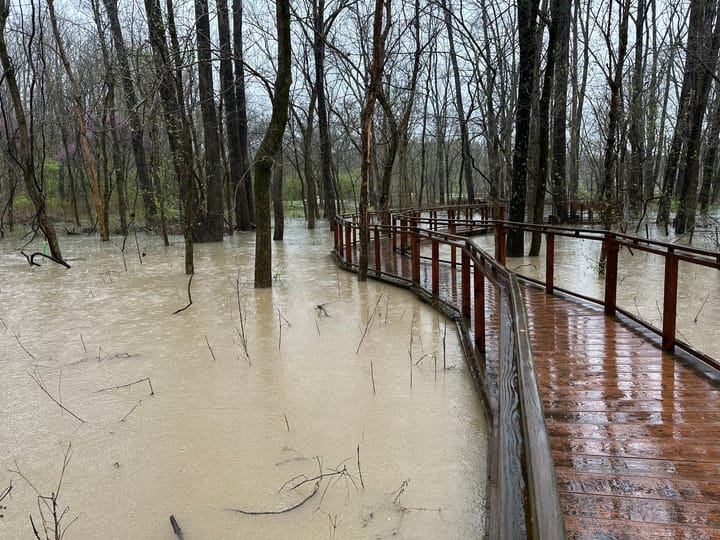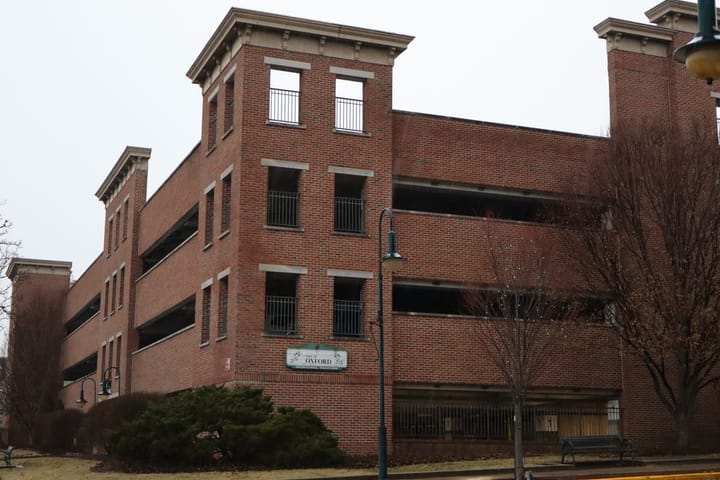Silvoor Stories: Spring flooding
As Amanda Bentley Brymer walked through Silvoor following heavy rain, she thought about climate change and the hope that a single bluebell leaf represents.

The Tri-State area just experienced its largest flooding event in seven years. In the late evening hours of Monday, April 7, the flood gauge on the Roebling Bridge between Cincinnati and Covington recorded the Ohio River cresting at 60.79 feet — about a quarter foot higher than the flood of 2018.
This week’s flooding was the second-highest crest observed at the Cincinnati gauge since March 5, 1997 when the river peaked at 64.7 feet. On that day, Vice President Al Gore toured the flooded streets of Riverfront with Federal Emergency Management Agency Director James Lee Witt and promised federal aid to flood victims. That December, Gore signed the Kyoto Protocol, the first international treaty setting targets for industrialized nations to reduce greenhouse gas emissions that drive climate change.
Climate change was certainly on my mind as my children and I walked through Silvoor Biological Sanctuary during a break in the recent downpour. It’s hard to say if and when a single weather event is directly caused by climate change, but the scientific consensus on climate trends and the principles of physics are clear: burning fossil fuels releases greenhouse gases into our atmosphere. Those gases trap heat that would otherwise seep out into space, warming our planet and atmosphere. A warmer atmosphere intensifies storms, making them more common and more severe with heavier rainfall that can cause flooding.
While Oxford was spared from major flood damage, the impact of several days of rain in Silvoor was apparent as my son helped me clear a clogged culvert where rainwater overflowed onto the trail. We heard the rumble of Collins Run as it swelled and barely held within its banks just south of the sanctuary. We marveled at the large pond that had suddenly formed as rainwater pooled in Silvoor’s basin. It was easy to imagine local residents and students ice skating there across a full and frozen pond as they did in the 1940s. Thoughts of a wintry scene reminded me that a freeze warning was forecast.
The last springtime freezing temperatures in our area typically occur around Mother’s Day in May, but this freeze warning felt foreboding as it immediately followed a week of severe thunderstorms, tornadoes, and flooding. Fluctuating spring weather makes me weary in a way that is sometimes difficult to discern from grief for the things we are losing to climate change.
We began to hike home with these heavy thoughts in mind when we noticed a single Virginia Bluebell leaf rising up from the soil like a tiny green beacon. Bluebells are well-known for their colorful blooms that last for several weeks through April and early May, but I’ve come to appreciate the single leaves that can easily go unnoticed. As sanctuary founder Dr. Robert Hefner observed in a column published on May 4, 1978, a bluebell seed will produce a single leaf in its first year. The plants will put out a few more leaves and possibly a flowering stalk in their second and third years. By the fourth year, a full-blooming stand of several flowering stalks will finally be established. Hefner marveled at the persistence and patience required to grow bluebells from seed.
A single Virginia Bluebell leaf is a sign of more blooms to come — a signal of good things. It’s a reminder to anticipate change and to be hopeful. My son is 10 years old, and he’ll be heading to high school by the time that single bluebell leaf develops into a full flowering stand. I think of his future and wonder what the weather and climate will be like in four years. We have plenty of reasons to feel overwhelmed while living through extreme weather and climate change. To cope well requires persistence, patience and a watchful eye for signals that there is still reason to hope.
All are welcome to view Virginia Bluebells and watch for those first-year leaves plus a variety of spring ephemerals during guided Wildflower Walks through Silvoor Biological Sanctuary this spring. Bring sturdy shoes and meet at the Peffer Park Pavilion at 1 p.m. each Sunday through May 11.
Amanda Bentley Brymer is Assistant Director of the Institute for the Environment & Sustainability at Miami University, where she also serves as Curator for Silvoor Biological Sanctuary, part of Miami University’s Natural Areas.




